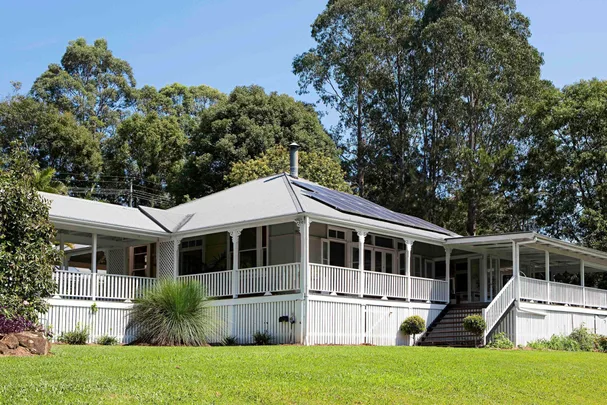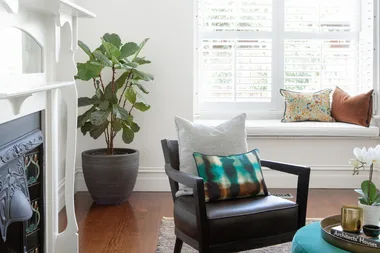Whether you’re buying a new home, refinancing or selling your property, here are the top 12 trends to watch out for in 2020.
Property expert Rebecca Jarret-Dalton from Two Red Shoes shares her insights.
1 2020 is the year for refinancing
Long gone are the days where homeowners would take out a mortgage and then see their only option as staying with that lender with the life of the loan. After cutting the official cash rate to historic lows in 2019, the RBA has taken the bold step of urging mortgage holders to shop around to ensure they are getting the best deal on their interest rates. You know what, they are.
Customers expect more from their lenders in return for their business. The lenders who can’t offer the most competitive rate will find themselves quickly broken up with as the act of refinancing becomes a more acceptable means to securing the best deal in town.
The savvy savers we now see in the market seize the opportunity they have opened up by securing their new shiny low rate and tend to keep making the same repayments as they were originally. This is getting these guys ahead by allowing them to build a buffer in an offset account or chipping directly away at the principal.
2 Heavy discounts in the mortgage world
When we are looking at refinancing it isn’t hard to see why. The current discounts being offered, particularly on fixed loan rates is massive! Right now, there are 5-year fixed loan rates on offer for as low as 2.7%. Customers are all over it and locking themselves in. But, what does this mean for the longer term stability of rates if banks are already offering lows of under 2.8% and the official cash rate is at the lowest it has been in history?
3 Smaller lenders are winners in 2020
The major banks are definitely the ones who are feeling the brunt of customers taking the opportunity to jump ship and find themselves a better deal. Small lenders are capitalising on this by staying competitive and flexible.These small players are also quite happy to sit back and watch the big banks come under scrutiny from the media and watch consumers become more and more agitated with the majors. These guys know that whilst their presence might be limited, they will fight for your business and try to stay relevant in today’s culture by adapting to models such as sustainable lending.

4 2020 will be the year of mortgage brokers
It seems like another instance of common sense, but the concept of “Best interest duty” will be legislated. In essence, this means that brokers have to put clients needs before their own , which at the end of the day is what we got into business to do! Nonetheless, with all the negative press surrounding the majors and the royal commission, consumers want more help to make sure they are making an informed decision. This is great for us in the mortgage brokerage game. At last report more than 60% of the loans are being established via brokers and I don’t see this changing any time soon.
5 Aussies will need to educate themselves about loans
Everyone knows the situation. You find something you fall in love with, but it is slightly out of the budget. Its a trap that so many people fall into. When it comes to the purchase of a property, extending yourself ever so slightly can be more than a little problematic. Whilst the majority of the population have a general understanding of the mechanics of a loan, what can be lacking is an understanding of the commitment you are making. Yes, sure the lenders take into consideration a rate floor which looks at your capacity to pay back a loan at 2.5% above the current rate, but the market fluctuates just like peoples life circumstances. In 2011 the standard variable rate went as high as 7.75%. Taking into consideration that most loans are a 25- to 30-year commitment, customers need to be aware that even with refinancing options available, at some point they may be in a position where the loan repayments could really stretch them. Even to breaking point.
Taking a step back though, another thing that a lot of Australians aren’t really educated on is the tightening of banks on the criteria they use to approve home loans.Where once having an estimate of household spending would be enough to get a loan across the line, today many lenders use a fine tooth comb and go through your detailed information to ascertain your capability to repay your mortgage.

6 Reign it in
Sure, it might be the case that many people are simply reigning in their expenses and paying off their mortgages because they have heard that they should be, but factors such as a change in Government also tends to spook people as they worry about the state of the economy.It is also no secret that retail is struggling and this has a knock-on effect – we spend less and retail sees a decline. There is a minor panic about the lack of spending and “business being bad” so we buckle down and save some more. It’s great to see surpluses building up from where I am sitting but I know the government disagrees.
7 First home buyer trends
When the Morrison Government assumed power earlier in the year they worked towards delivering on their election promise of a First Home Loan Deposit Scheme. This initiative will become available to a limited amount of low- and middle-income earning buyers who meet specific criteria and have a 5% deposit saved from the 1st of January next year. The main advantage of this scheme is that it allows these first time buyers to avoid paying LMI (Lenders Mortgage Insurance) which normally is slugged on when borrowers don’t have a minimum 20% deposit up their sleeve. Whilst at first there were initial concerns that lenders may offer this group of home buyers an inflated interest rate, the rates which have been announced to date have been surprisingly competitive. This is though with only 10,000 of these loans available, it means that an estimated 90% of the first home buyer market will miss out on the opportunity to capitalize on this offer so its impact won’t be something that is widespread. This fact aside, low interest rates across the board place our first home buyers in a comfortable position to enter the market. With no change to rates in sight, we can expect to see these new-comers continue to actively engage in the market and stake their claim in the real estate game.

8 The year of the renovation
With the housing market bottoming out in mid 2019, the desire to sell up and upgrade the family home has been more of a pipe dream for most. Homeowners simply don’t have the equity in their current property to make it work.
Those who have managed to maintain some of their equity (or are slowly clawing it back as the market begins to recover), have even less of a desire to then go and spend what they do have on massive change over costs including the dreaded stamp duty and agent fees.
Cue the renovators. This smart bunch are playing the odds. They approach their lender for a top-up mortgage so they can unlock a little bit of cash and pump this into giving their current home a facelift or complete makeover in hopes to generate more equity down the track. From the good old DIY, to the complete knock-down/rebuild,these renovations are presenting themselves in all shapes and forms across the country and is a trend I definitely see continuing well into next year.
9 Those who aren’t renovating are choosing to build
The amount of registered land which is currently available is at levels unheard of before and this is giving our first home buyers some great options for getting themselves into the market. Add to this the fact that you really can’t put a value on unregistered land, and buyers are finding themselves in the prime position. If anything, as property and suburbs develop it is more likely that the value of the land will only increase and this is giving customers some great certainty and confidence.
10 People are still looking for extra income through property portfolio
Apart from those who are living in Western Sydney, who are currently experiencing a large infrastructure boom, there isn’t a lot of faith in the concept of growth at the moment, particularly with regulator intervention. This means that consumers are turning to other methods to feather their nest. In many suburban neighbourhoods you can see this practice put to test with the demolition of single dwelling homes and the erection of townhouses and duplexes to provide a secondary income stream. Beyond this, others are looking to our regional cities where entry prices are on the cheaper side and they can build their investment portfolio.

11 Negative gearing is on the decline
With the current interest rates sitting as low as they are, and the rental returns being good (if not great) at the moment, there aren’t too many negative aspects of being in the investment property game. Cashflow is definitely king, with balanced portfolios coming in a sweet second.
12 Separation rates are high and will continue to rise in 2020
It is a sad fact that separation rates are high at the moment and unfortunately expected to keep rising next year. Separation or divorce coupled with a mortgage can be a messy business. Mortgage owners “consciously uncoupling” from each other, or even the fear of this possibility is often the motivation for many to become savers. All too often, many “older” first home buyers who used to have a significant amount of discretionary income to spend lose it all and find they are left with nothing. Women in particular want to feel empowered and in control of their own finances. They often are the ones who drive the need to save. These wives and partners also are conscious of the benefits of setting themselves up with their own income streams. Women want to feel secure that should the need arise to move on, they will be in the best financial situation they can be so that retaining the family home is a serious option that can be put on the table.
You might also like:
The Three Birds’ latest renovation!
How to create a Hamptons haven
Selling your home? What to renovate, fix or just makeover for the highest return on investment







